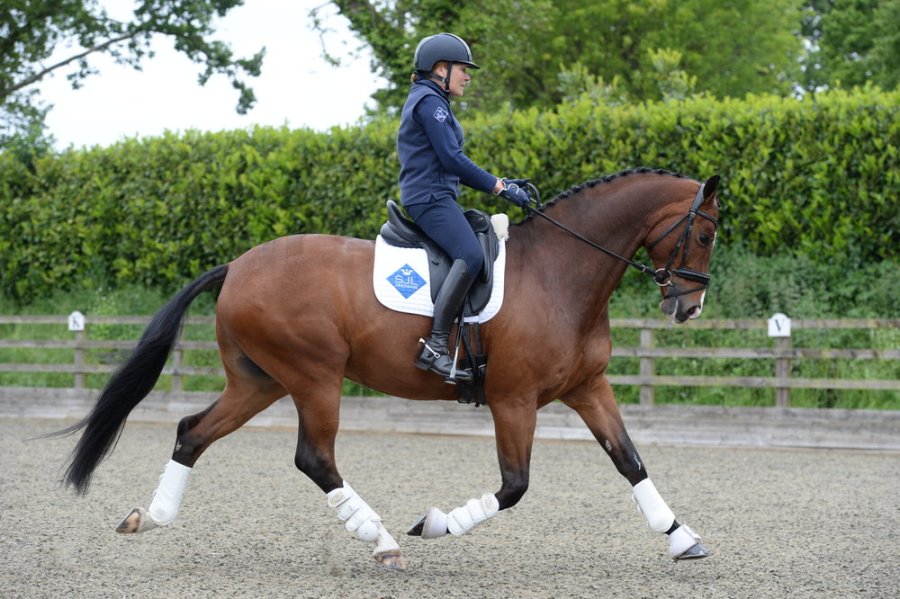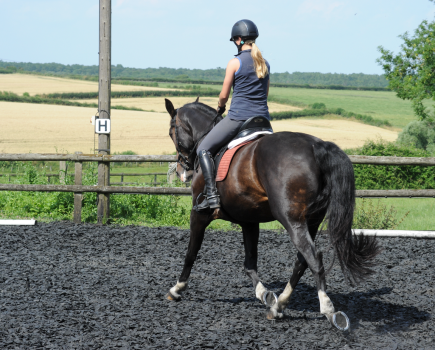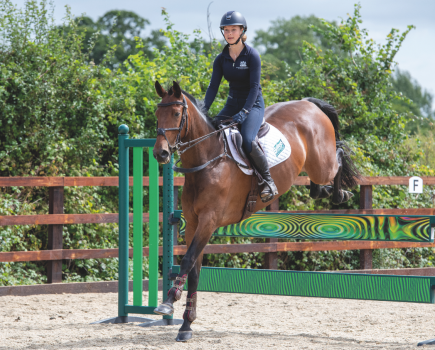Asking your horse to transition within a gait can be tricky to master. They might lose the rhythm, fall out of the gait or become resistant. Riding this change in gear can be enjoyable and comfortable, once you’ve had some practice.
Read on to find out how you can show strides of medium trot in a dressage test with success from list four dressage trainer and judge Alex Gingell.
“When I first became a judge in the 1990s, I was taught that the horse’s frame should lengthen from working to medium trot,” explains Alex.
“Nowadays we’re told that the horse’s head can be a little in front of the vertical in medium, and the head and neck should be slightly lower. It’s a lovely movement to ride and judge when ridden well, and high marks are easy to achieve for a powerful, loose and well-balanced medium trot.”
How to perfect medium trot
- As you turn onto the diagonal in trot, sit up, half-halt and straighten your horse.
- Once straight, allow him forwards.
- His quarters should sink down a little and his hind legs should push him forwards.
- He should remain supple and balanced.
- You’re aiming for longer, more energetic strides with only a little change in outline.
- Keep your horse connected, round and in front of your leg.
- Look up and ahead at the marker you’re riding towards.
Common errors
What the judge doesn’t want to see:
- The horse dropping onto the forehand
- Loss of engagement
- Loss of rhythm and balance
- Hollowing
- Hurrying
Top tip
Don’t ask for too much too soon. Your horse responding with a more forward action is a good first stage. Get a few correct steps first and then build up from there.
Meet the expert: Alex Gingell is a British Dressage list 4 judge and trainer. He and his wife Jayne founded and run Hack Up, an award-winning bespoke supplement company for horses.









